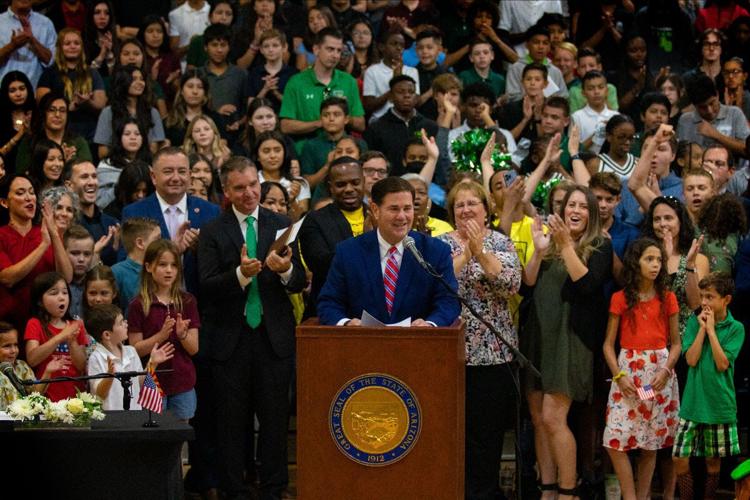|
Susan, a suburban married mother working one job, peacefully drops her son off at his private school and drives back to her gated community in a Range Rover. Because in addition to her cushy home and vehicle, another thing money can buy is any education for her son. She was able to assess each schooling opportunity to choose the one that best met his unique needs, settling on a private school. He’s thriving and on track to be admitted into a prestigious college that will propel him into his dream career.
Meanwhile, Rachel, an inner-city single mother working two jobs, anxiously drops her daughter off at the bus stop to her district-locked public school. Her daughter has special learning needs that aren’t best suited for a big public school environment, and her falling grades and reading scores make her daughter feel like a failure. Rachel reassures her daughter but knows she’s ultimately being let down by a system that doesn’t suit her. She wishes she could find a better schooling option, but that’s a choice she can’t afford, and it’s her daughter who suffers. This disparity shows the reality of the current privilege-centered schooling system where wealthier parents have schooling options while budget-strapped parents are trapped at a government-run school in the district. A public school system run by educational bureaucrats with a schooling monopoly does not put students first. And it ultimately disempowers parents and teachers. The solution to these issues already active in Arizona that Texas and many other states should adopt is school choice. Despite being known for its business-friendly economy and family-loving culture, Texas lags in educational freedom. Meanwhile, Arizona, since implementing the most expansive school choice policy in the nation this year, received nearly 8,000 more new Empowerment Scholarship Account (ESA) applications as parents jumped on the opportunity to explore educational opportunities for their children. Rather than funneling taxpayer money for education into government-run schools, school choice redirects those funds to families. Arizona has reimagined school choice in the form of ESAs that supply about $7,000 per student per year. Parents can use the money to fund any school-related expenses, such as private school tuition, homeschool curriculum, tutors, etc. This approach empowers parents to pursue a more holistic approach to their children’s education rather than being forced to place them in a one-size-fits-all system that varies immensely in quality depending on location, mainly. Not only are parents empowered with the ability to choose what’s best for their kids, but studies show that school choice positively affects academic outcomes. Students test better and experience overall improvement from a school that fits their unique needs. At the same time, new data on educational progress shows that public school performance has fallen behind even more since the pandemic. School choice also increases competition, as public schools are more incentivized to improve education for their students by breaking down the monopoly situation (one dominant supplier). And this tends to provide better compensation for teachers who have little negotiating power in states where public schools have a monopsony (one dominant consumer). So what’s the holdup? Well, for Texas and many other states, politicians in rural communities have pushed back against school choice. This results from misconception and, in some cases, fear-mongering that school choice somehow defunds public schools, which would be a concern for rural areas where public school is the primary option. But school choice doesn’t take money away - it gives it back to parents and allows them to choose which education services receive it. High-quality public schools will attract more students and, thereby, more funding. Public schools spend more than $14,000 per student per year in Texas, and outcomes for students and teachers are lacking, so more funding isn’t the answer. If the question is about funding for public schools, then those against school choice are conceding that public schools aren’t able to compete. So, it seems school choice opposition is more about politics and winning votes than what’s best for students, whether a parent is like Rachel or Susan. The U.S. system of federalism allows for a laboratory of competition in which states can implement new ideas. Arizona is taking full advantage of this liberty and using it to empower its parents, students and teachers with educational freedom. To remain competitive and among the freest states, the time is now for Texas to enact school choice. Our vote matters this November, so the next session will be when we can say, “It’s for the kids.” Originally posted at The Center Square Comments are closed.
|
Vance Ginn, Ph.D.
|


 RSS Feed
RSS Feed